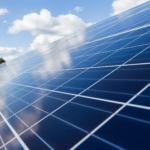As the global shift towards renewable energy intensifies, Australia stands out as one of the frontrunners in integrating renewables into the power grid. The country’s vast open landscapes and abundant natural resources make it an ideal setting for solar and wind power, and these sources are being harnessed at an unprecedented scale. While this transition promises a cleaner, more sustainable future, it also presents a unique set of challenges. Chief among them, power system stability.
Australia’s power system is undergoing rapid transformation. As more renewable energy sources connect to the grid, maintaining stability has become increasingly complex.
Understanding Power System Stability
Power system stability refers to the ability of the grid to maintain consistent voltage, frequency, and overall equilibrium in the face of disruptions. This is essential to ensure reliable power delivery to homes, businesses, and industries. Traditional power systems, powered primarily by fossil fuels, are inherently more stable because of their large, synchronous generators that maintain system inertia, dampening fluctuations in voltage and frequency.
In contrast, renewable sources such as solar and wind are often variable and intermittent, as their output depends on weather conditions. This variability complicates the task of balancing supply and demand, as well as responding to sudden changes on the grid. As renewables increasingly replace traditional energy sources, maintaining power system stability has become a top priority for the industry.
The Renewable Revolution in Australia
Australia’s energy landscape has seen a dramatic transformation over the past few years. According to the Clean Energy Council, over 38% to 40% of Australia’s electricity now comes from renewable sources, with wind and solar leading the charge. Large-scale renewable projects, coupled with a growing number of rooftop solar installations, are reshaping the grid.
However, while these advancements bring Australia closer to its sustainability goals, they introduce technical hurdles that must be addressed.
This shift is critical from an environmental standpoint, but Australia’s existing grid infrastructure was not designed with such high levels of renewables in mind. As a result, the power sector is now facing a pressing need to adapt, modernise, and implement solutions that support grid stability.
Key Challenges to Power System Stability
The influx of renewable energy introduces several challenges to the stability of Australia’s power grid:
Reduced System Inertia
In traditional power systems, inertia provided by synchronous generators acts as a buffer against sudden changes in frequency. However, renewable energy sources, particularly solar PV and most wind turbines, lack this rotational inertia, leading to a faster response to disturbances and making the grid more susceptible to fluctuations.
Voltage Stability
With renewables, managing voltage stability becomes a priority. Unlike conventional generators, renewables often feed into the grid through inverters, which can struggle to handle significant fluctuations. This can lead to instability, particularly during times of high renewable penetration or rapid shifts in generation levels due to weather changes.
Frequency Control
As renewables become dominant, maintaining frequency within a tight range is increasingly challenging. Traditional power plants are designed to respond quickly to changes in demand, whereas renewables may not be able to respond as swiftly, leading to potential frequency imbalances. This issue is especially prominent in isolated grids or smaller regions with a high penetration of renewables.
Grid Congestion
The decentralised nature of renewables, with numerous smaller installations rather than a few large power plants, can create congestion in the transmission network. The grid infrastructure, often designed decades ago, is not always equipped to handle the surge of distributed energy sources, leading to inefficiencies and instability.
Intermittency and Demand Response
Unlike coal or gas, solar and wind cannot generate power on demand. This variability can cause supply-demand mismatches, especially during peak periods. Without effective demand-response mechanisms, this intermittency can lead to either overgeneration or shortfalls, threatening grid stability.
Strategies for Enhancing Power System Stability
Given these challenges, Australia’s energy sector must explore and adopt innovative solutions to bolster power system stability. Partum Engineering and other leaders in the industry are working to address these issues:
Grid-Scale Battery Storage
Battery storage is emerging as a cornerstone for maintaining grid stability. Large-scale batteries can store excess renewable energy generated during periods of low demand and release it during peak times, helping to balance supply and demand. In addition, batteries can provide frequency control and voltage support, responding rapidly to fluctuations and acting as a stabilising force for the grid.
Advanced Inverter Technology
Inverters connect renewables to the grid, but traditional models struggle to support system stability. Advanced inverters, known as “grid-forming” inverters, can mimic the inertia of traditional generators, enhancing frequency stability. Grid-forming inverters are becoming essential as renewable penetration rises, providing a more robust foundation for stability.
Flexible Demand Response Programs
Demand response programs incentivise consumers to adjust their electricity usage based on grid conditions, helping to alleviate the supply-demand imbalance. By encouraging industries, commercial enterprises, and even residential users to shift their energy consumption, demand response programs create a more flexible and resilient grid.
Grid Modernisation and Transmission Upgrades
Upgrading Australia’s transmission infrastructure is crucial to accommodate a renewable-heavy grid. Modernised transmission systems can better manage the distributed nature of renewables, reducing congestion and improving overall grid stability. Investments in new lines and digital monitoring systems will enable real-time management and control, enhancing reliability.
Energy Management Systems and Forecasting
Advanced energy management systems that leverage artificial intelligence and machine learning are critical for accurately forecasting renewable generation and demand. By using data-driven insights to anticipate and mitigate fluctuations, these systems play a vital role in maintaining grid stability and ensuring reliable power delivery.
Partum Engineering’s Role in Power System Stability
As an Australian engineering consultancy specialising in the power sector, Partum Engineering is at the forefront of this transition. We work closely with clients to design and implement solutions that reinforce stability, reliability, and resilience in a renewable-dominated grid. From grid-scale storage integration to designing substations that can accommodate a high influx of renewables, we are committed to addressing the unique challenges posed by this energy transformation.
Our team of engineers and consultants brings deep expertise in power systems, and we are constantly exploring new technologies and methodologies to support Australia’s renewable goals. By collaborating with industry stakeholders, regulatory bodies, and technology providers, we are helping to build a stable, sustainable energy future for Australia.
A Sustainable, Stable Future
The path to a renewable-powered future is filled with both promise and complexity. As Australia continues to increase its renewable energy capacity, the stability of our power system will be paramount to realising the full potential of these clean energy sources. Through innovative solutions, strategic infrastructure upgrades, and a commitment to resilience, Australia’s power sector can rise to the challenge and ensure a stable, reliable grid for generations to come.
At Partum Engineering, we recognise the importance of power system stability in this journey. By developing and implementing forward-thinking engineering solutions, we are proud to support Australia’s transition to a cleaner, greener energy landscape, without compromising the reliability that Australians rely on every day. Contact us today to discuss how we can help make your next project sustainable and successful.






